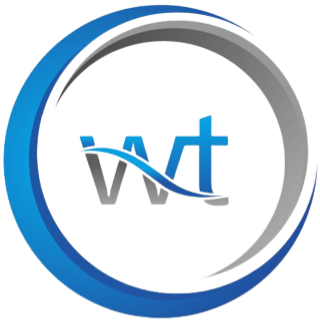Whole Body Bone Scintigraphy
- DESCRIPTION 1. 1.Whole Body Bone Scintigraphy is an examination in which the skeletal system is visualised with special cameras using a low dose of radioactive material. 1. EXPECTED BENEFIT FROM THE PROCEDURE 1. 2.1. It is used for imaging of bone diseases. 2. RISKS AND COMPLICATIONS OF THE PROCEDURE 1. 3.1. No complications are expected. 3. IMPORTANCE AND FEATURES OF THE DRUGS TO BE USED (possible undesirable effects and points to be considered) 1. 4.1. Since the radiation caused by the radioactive material used in Whole Body Bone Scintigraphy is negligible, no side effects are expected. 4. POINTS TO BE CONSIDERED BY THE PATIENT BEFORE AND AFTER THE PROCEDURE AND CAUTIONS PROBLEMS THAT MAY OCCUR IN CASE OF NON-COMPLIANCE 5.1. Nuclear medicine tests use low doses of radioactive material. Please warn your doctor if you are pregnant or breastfeeding. 5.2. Since there should be absolutely no movement during the counting process, small children or infant patients must be accompanied by two people. If you think that your child cannot stay still, please warn your nuclear medicine doctor before the appointment day. 5.3. Do not make another appointment on the same day. 5.4. Please bring your previously taken films (direct radiography, CT, MRI, MRI, USG, etc.), blood and other tests with you on the day of your appointment in order to make your examination in the Department of Nuclear Medicine healthier. 5.5. Fasting is not required for this examination. 5.6. Your imaging will start at least 2 hours after the intravenous administration of the radioactive material. During this time you will be asked to drink 1-2 litres of water and go to the toilet frequently. Immediately before the scan, you will need to go to the toilet again and remove any metal objects you are wearing. 1. ESTIMATED DURATION OF THE PROCEDURE 1. Your imaging will start at least 2 hours after the intravenous administration of the radioactive material. 2. Your results will be given within the specified time after the end of the examination. Parathyroid Scintigraphy (SPECT/CT) 1. DEFINITION 1.1.1.Parathyroid Scintigraphy is an examination in which the parathyroid glands are visualised with special cameras using a low dose of radioactive material. 2. EXPECTED BENEFIT FROM THE PROCEDURE 1. 2.1. It is used for imaging in cases where the parathyroid glands work too much (hyperparathyroidism). 3. RISKS AND COMPLICATIONS OF THE PROCEDURE 1. 3.1. No complications are expected. 4. IMPORTANCE AND FEATURES OF THE DRUGS TO BE USED (possible undesirable effects and points to be considered) 1. 4.1. Since the radiation caused by the radioactive material used in Parathyroid Scintigraphy is negligible, no side effects are expected. 5. POINTS TO BE CONSIDERED BY THE PATIENT BEFORE AND AFTER THE PROCEDURE AND CAUTION. 5.1. Nuclear medicine examinations use low doses of radioactive material. Please warn your doctor if you are pregnant or breastfeeding. 5.2. Since it is absolutely necessary not to move during the counting process, small children or infant patients must be accompanied by two people. If you think that your child cannot stay still, please warn your nuclear medicine doctor before the appointment day. 5.3. Do not make another appointment on the same day. 5.4. Please bring your previously taken films (direct radiography, CT, MRI, MRI, USG, etc.), blood and other tests with you on the day of your appointment in order to make your examination in the Department of Nuclear Medicine healthier. 5.5. Fasting is not required for this examination. 1. ESTIMATED DURATION OF THE PROCEDURE 1. After the radioactive material is administered intravenously, imaging will be performed at 10 minutes 1,2 and 4 hours. 2. Your results will be given within the specified time after the end of the examination. 4. Kidney Scintigraphy 1. DEFINITION 1. Kidney Scintigraphy is an examination based on the principle of imaging kidney blood supply and function with special cameras using low doses of radioactive material. 2. EXPECTED BENEFIT FROM THE PROCEDURE 1. It is aimed to evaluate renal function for the diagnosis and follow-up of renal vascular diseases, diseases that may affect the kidney or urinary tract. 3. RISKS AND COMPLICATIONS OF THE PROCEDURE 1. No complications are expected. 4. IMPORTANCE AND FEATURES OF THE DRUGS TO BE USED (possible undesirable effects and points to be considered) 1. 10.1. Since the radiation caused by the radioactive materials used in kidney scintigraphy is negligible, no side effects are expected. 2. 10.2. During the scan, a diuretic group drug may be administered intravenously when deemed necessary by the physician. In this case, an increase in urine output may be observed due to diuretic use. 5. POINTS TO BE CONSIDERED BY THE PATIENT BEFORE AND AFTER THE PROCEDURE AND CAUTIONS 5.1. Nuclear medicine examinations use low doses of radioactive material. Please warn your doctor if you are pregnant or breastfeeding. 5.2. Since it is absolutely necessary not to move during imaging, small children or infant patients must be accompanied by two people. If you think that your child cannot remain still, please warn your nuclear medicine doctor before the appointment day. 5.3. Do not make another appointment on the same day. 5.4. Please bring your previously taken films (direct radiography, CT, MRI, MRI, USG, etc.), blood and other tests with you on the appointment day in order to make your examination to be performed in the Department of Nuclear Medicine healthier. 5.5 Fasting is not necessary for this examination. It will be appropriate to drink 1-2 glasses of water. 1. ESTIMATED DURATION OF THE PROCEDURE 1. 12.1. Your imaging will start with the administration of the radioactive material intravenously under the device. Your scan will last 20 minutes (40 minutes if performed with diuretic), and another short image will be taken 30-60 minutes after this scan is finished. 2. 12.2. Your results will be given within the specified time after the examination is completed. 6. Thyroid Scintigraphy 1. DEFINITION 1. 13.1 Thyroid Scintigraphy is an examination in which the thyroid is visualised with special cameras using a low dose of radioactive material. 2. EXPECTED BENEFIT FROM THE PROCEDURE 1. 14.1. It is used for visualisation of thyroid diseases. 3. RISKS AND COMPLICATIONS OF THE PROCEDURE 1. 15.1. No complications are expected. 4. IMPORTANCE AND FEATURES OF THE DRUGS TO BE USED (possible undesirable effects and points to be considered) 1. 16.1. Since the radiation caused by the radioactive material used in Thyroid Scintigraphy is negligible, no side effects are expected. 5. POINTS TO BE CONSIDERED BY THE PATIENT BEFORE AND AFTER THE PROCEDURE AND CAUTION 5.1. Nuclear medicine examinations use low doses of radioactive material. Please warn your doctor if you are pregnant or breastfeeding. 5.2. Since it is absolutely necessary not to move during the counting, small children or infant patients must be accompanied by two people. If you think that your child cannot stay still, please warn your nuclear medicine doctor before the appointment day. 5.3. Do not make another appointment on the same day. 5.4. Please bring your previously taken films (direct radiography, CT, MRI, MRI, USG, etc.), blood and other tests with you on the appointment day in order to make your examination to be performed in the Department of Nuclear Medicine healthier. 5.5. Fasting is not required for this examination. 1. ESTIMATED DURATION OF THE PROCEDURE 1. 18.1. Your imaging will be performed 15-20 minutes after the radioactive material is administered intravenously. 2. 18.2. Your results will be given within the specified time after the end of the examination. 8. Lung Perfusion-Ventilation Scintigraphy 1. DEFINITION 1. 19.1.Lung Perfusion-Ventilation Scintigraphy is the imaging of the blood supply and ventilation of the lungs with special cameras using a low dose of radioactive material. 2. EXPECTED BENEFIT FROM THE PROCEDURE 1. 20.1. It is aimed to diagnose and evaluate the prevalence of lung diseases such as pulmonary embolism. 3. RISKS AND COMPLICATIONS OF THE PROCEDURE 1. 21.1. No complications are expected. 4. IMPORTANCE AND FEATURES OF THE DRUGS TO BE USED (possible undesirable effects and points to be considered) 1. 22.1. Since the radiation caused by the radioactive substances used in perfusion and ventilation scintigraphy is negligible, no side effects are expected. 5. POINTS TO BE CONSIDERED BY THE PATIENT BEFORE AND AFTER THE PROCEDURE AND CAUTIONS 9. PROBLEMS THAT COULD BE EXPERIENCED IN CASE OF NOT TAKING 5.1. Nuclear Medicine examinations use low doses of radioactive material. Please warn your doctor if you are pregnant or breastfeeding. 5.2. Since it is absolutely necessary not to move during imaging, small children or infant patients must be accompanied by two people. If you think that your child cannot remain still, please warn your nuclear medicine doctor before the appointment day. 5.3. Do not make another appointment on the same day. 5.4. Please bring your previously taken films (direct radiography, CT, MRI, MRI, USG, etc.), blood and other tests with you on the day of your appointment in order to make your examination in the Department of Nuclear Medicine healthier. 1. ESTIMATED DURATION OF THE PROCEDURE 10. 6.1. Your shoot will take place on two separate days: Day 1: After the injection under the device, images will be taken from various angles (perfusion scintigraphy) Day 2: After the patient inhales vapour from the oxygen cylinder, images will be taken from various angles. The shooting time varies depending on the patient’s breathing performance (ventilation scintigraphy). 6.2. Your results will be given within the specified period after the examination is completed. Renal Cortical Scintigraphy 1. DEFINITION 1. 25.1.Renal Cortical Scintigraphy is an examination in which the kidneys are visualised with special cameras using a low dose of radioactive material. 2. EXPECTED BENEFIT FROM THE PROCEDURE 1. 26.1. It is used for diagnosis and follow-up purposes in imaging in cases where the kidneys are damaged (such as inflammation) or there is a lesion in the kidney. 3. RISKS AND COMPLICATIONS OF THE PROCEDURE 1. 27.1. No complications are expected. 4. IMPORTANCE AND FEATURES OF THE DRUGS TO BE USED (possible undesirable effects and points to be considered) 1. Since the radiation caused by the radioactive material used in 28.1.1.Renal Cortical Scintigraphy is negligible, no side effects are expected. 5. POINTS TO BE CONSIDERED BY THE PATIENT BEFORE AND AFTER THE PROCEDURE AND CAUTIONS 5.1. Nuclear medicine examinations use low doses of radioactive material. Please warn your doctor if you are pregnant or breastfeeding. 5.2. Since it is absolutely necessary not to move during the counting, small children or infant patients must be accompanied by two people. If you think that your child cannot stay still, please warn your nuclear medicine doctor before the appointment day. 5.3. Do not make another appointment on the same day. 5.4. Please bring your previously taken films (direct radiography, CT, MRI, MRI, USG, etc.), blood and other tests with you on the day of your appointment in order to make your examination in the Department of Nuclear Medicine healthier. 5.5. Fasting is not required for this examination. 1. ESTIMATED DURATION OF THE PROCEDURE 1. 30.1. On the morning of the examination, you should drink a few glasses of water or other liquid. Your imaging will start 2-4 hours after the radioactive material is administered intravenously. The scan time is between 5-20 minutes. 12. Your results will be given within the specified time after the test is completed 12. Oncological Whole Body PET/CT 1. DEFINITION 1. 31.1.Oncological Whole Body PET/CT is an examination in which the whole body is imaged with special cameras (PET/CT) using a low dose of radioactive material in cancer patients. 2. EXPECTED BENEFIT FROM THE PROCEDURE 1. 32.1. It is used in the diagnosis of cancer patients, imaging of recurrence or metastases in follow-up, and evaluation of treatment response. 3. RISKS AND COMPLICATIONS OF THE PROCEDURE 1. 33.1. There are no complications of the examination. 4. IMPORTANCE AND CHARACTERISTICS OF DRUGS TO BE USED (possible undesirable effects and points to be considered) 1. Since the radiation caused by the radioactive material used in 34.1.Oncological Whole Body PET/CT and the radiation caused by CT is negligible, no side effects are expected. 5. POINTS TO BE CONSIDERED BY THE PATIENT BEFORE AND AFTER THE PROCEDURE AND CAUTIONS 5.1. Nuclear medicine examinations use low doses of radioactive material. Please warn your doctor if you are pregnant or breastfeeding. 5.2. Since it is absolutely necessary not to move during the counting, small children or infant patients must be accompanied by two people. If you think that your child cannot stay still, please warn your nuclear medicine doctor before the appointment day. 5.3. Do not make another appointment on the same day. 5.4. Please bring your previously taken films (direct radiography, CT, MRI, MRI, USG, etc.), blood and other tests with you on the day of your appointment in order to make your examination in the Department of Nuclear Medicine healthier. 5.5. At least 4 hours of fasting is required before the application. During this period, no food should be eaten, calorific drinks (tea, coffee, cola, etc.) should not be drunk. Chewing gum should not be chewed. However, you can drink water. 5.6. The radiopharmaceutical used in this test is F18 labelled FDG (a sugar compound). Therefore, the patient’s blood glucose level and fasting time are important. Please inform us in advance if you have diabetes. In addition, on the day of the examination, you should take your diabetes medication at 4 o’clock in the morning and have a light breakfast and come to the examination 5.7. When coming to the test, you should wear comfortable clothes (such as tracksuits) without metal accessories and you should wear as few metal items as possible (earrings, rings, wristwatches, etc.) 5.8. If you use a colostomy bag or have a urinary catheter, bring a clean bag with you 1. ESTIMATED DURATION OF THE TRANSACTION 1. 36.1. You will be given a small amount of radioactive material intravenously for the test. After waiting in a calm environment for about 60 minutes after the injection, you will be taken to the device and the scan will be performed for 15-25 minutes. 2. 36.2. Your results will be given within the specified time after the test is finished

+90 537 656 24 68
Moment Office
Beştepe Mahallesi 32nd Street No:1 Floor:5 Interior Door No:93 Yenimahalle / Ankara
Download Now!
Wetreat AppGet a health check for you and your loved ones fast. Find out possible causes 24/7 – no appointment needed. You can check your symptoms online from the comfort of your own home. Whatever’s bothering you, from pain, headache or anxiety to allergy or food intolerance, wetreat’s free symptom checker can help you find answers.
We will be with you soon with our mobile application.


